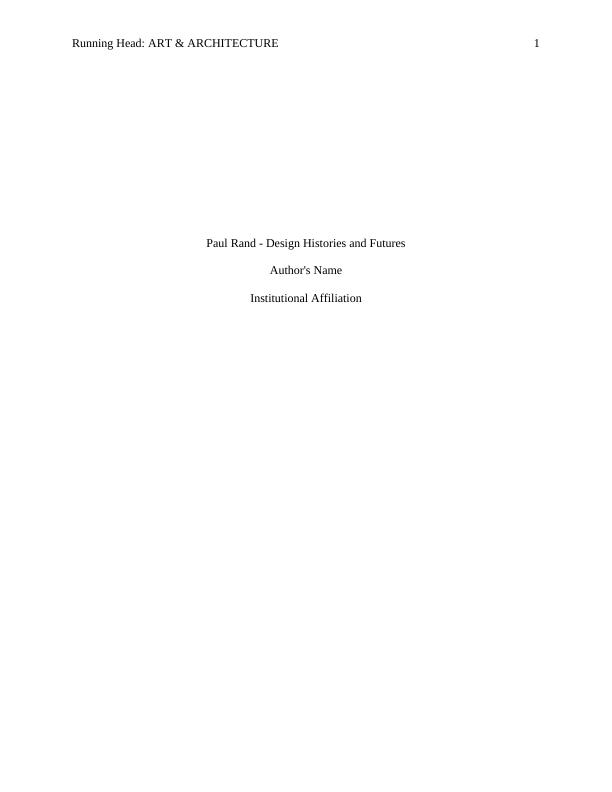Paul Rand - Design Histories and Futures
9 Pages2077 Words218 Views
Added on 2023-06-05
About This Document
This article explores the life and works of Paul Rand, the legendary graphic designer who revolutionized the world of graphic designing. It discusses his design philosophy, influences, and impact on the field of graphic designing. The article also provides examples of his designs and his contribution to the field of commercial art.
Paul Rand - Design Histories and Futures
Added on 2023-06-05
ShareRelated Documents
End of preview
Want to access all the pages? Upload your documents or become a member.



